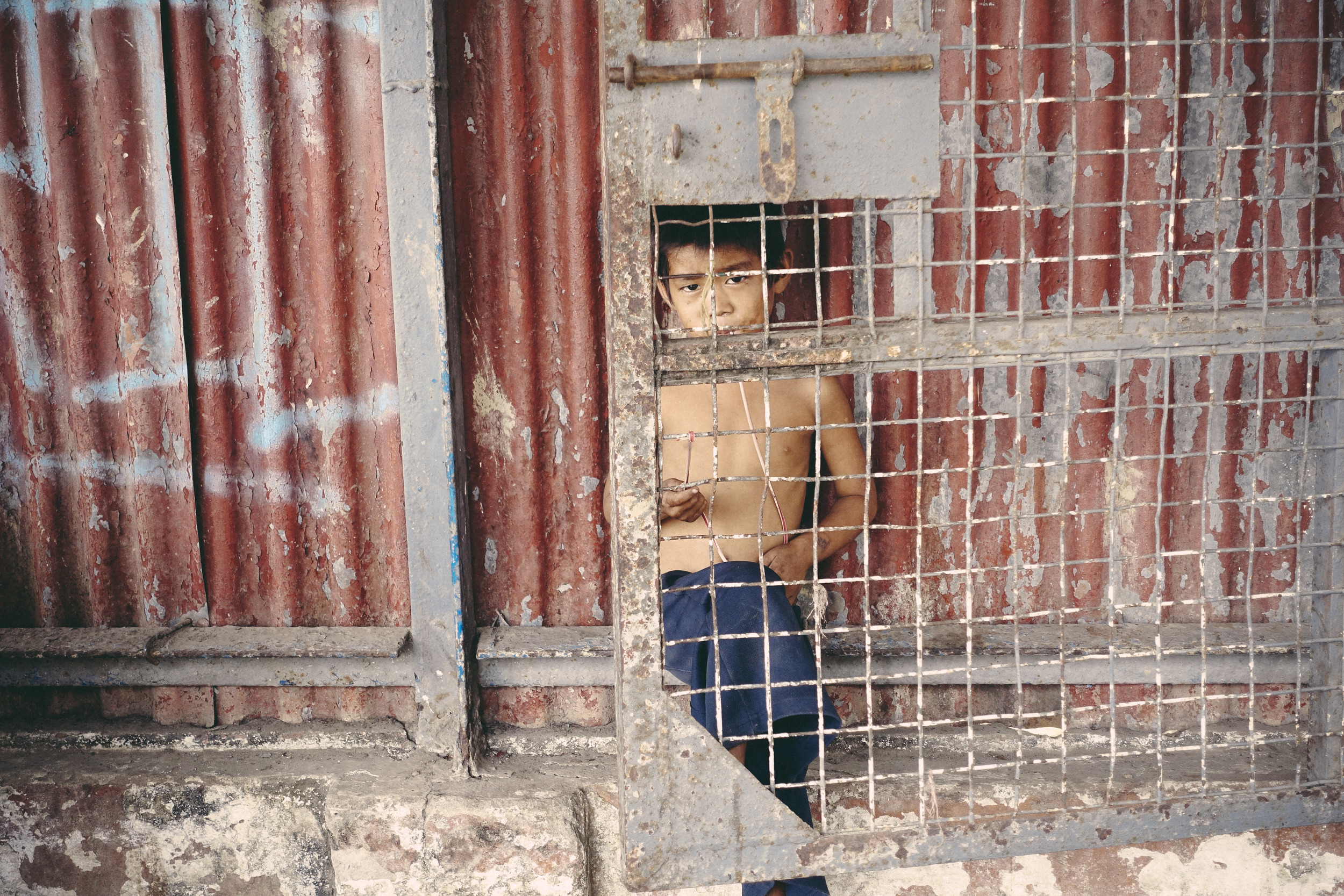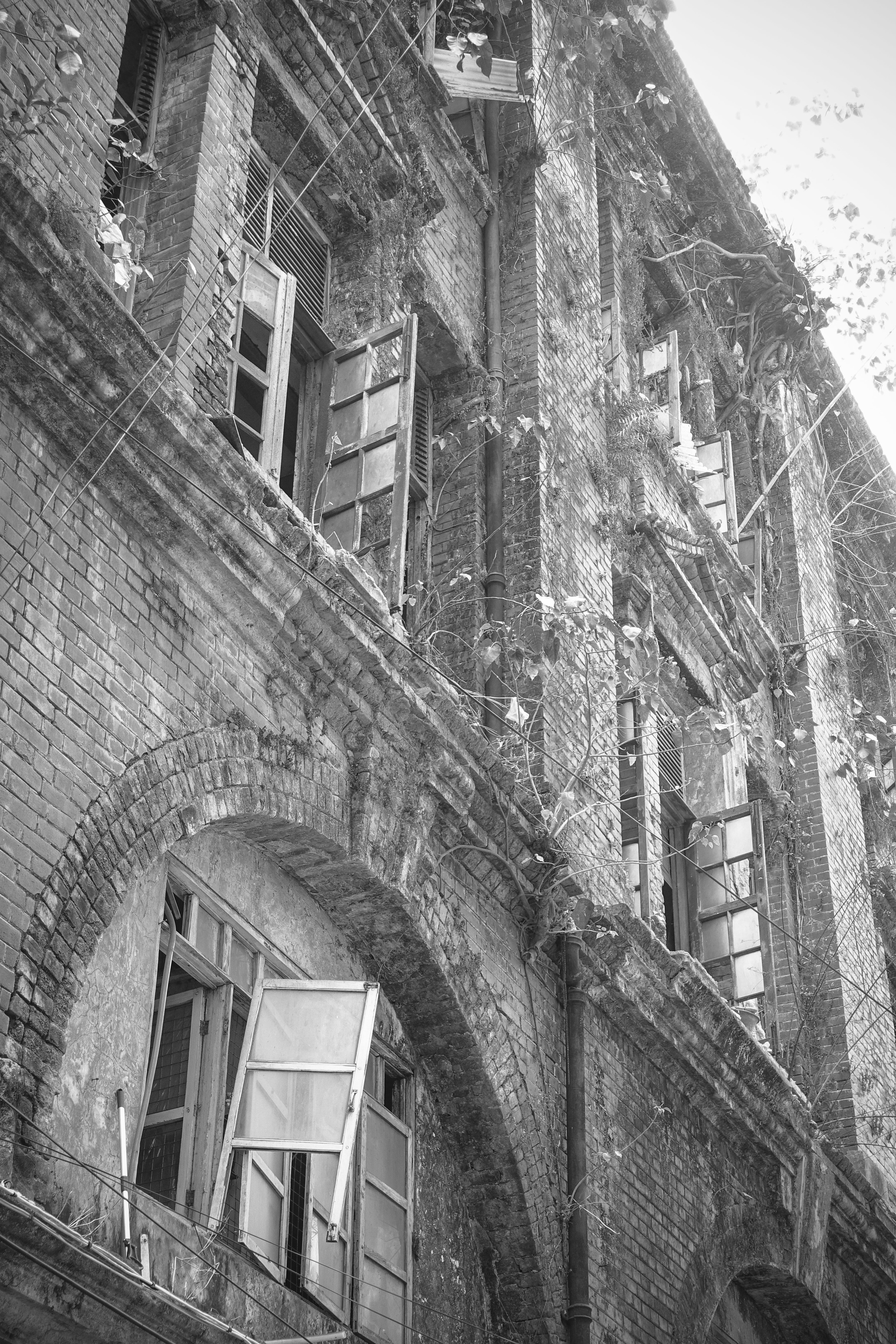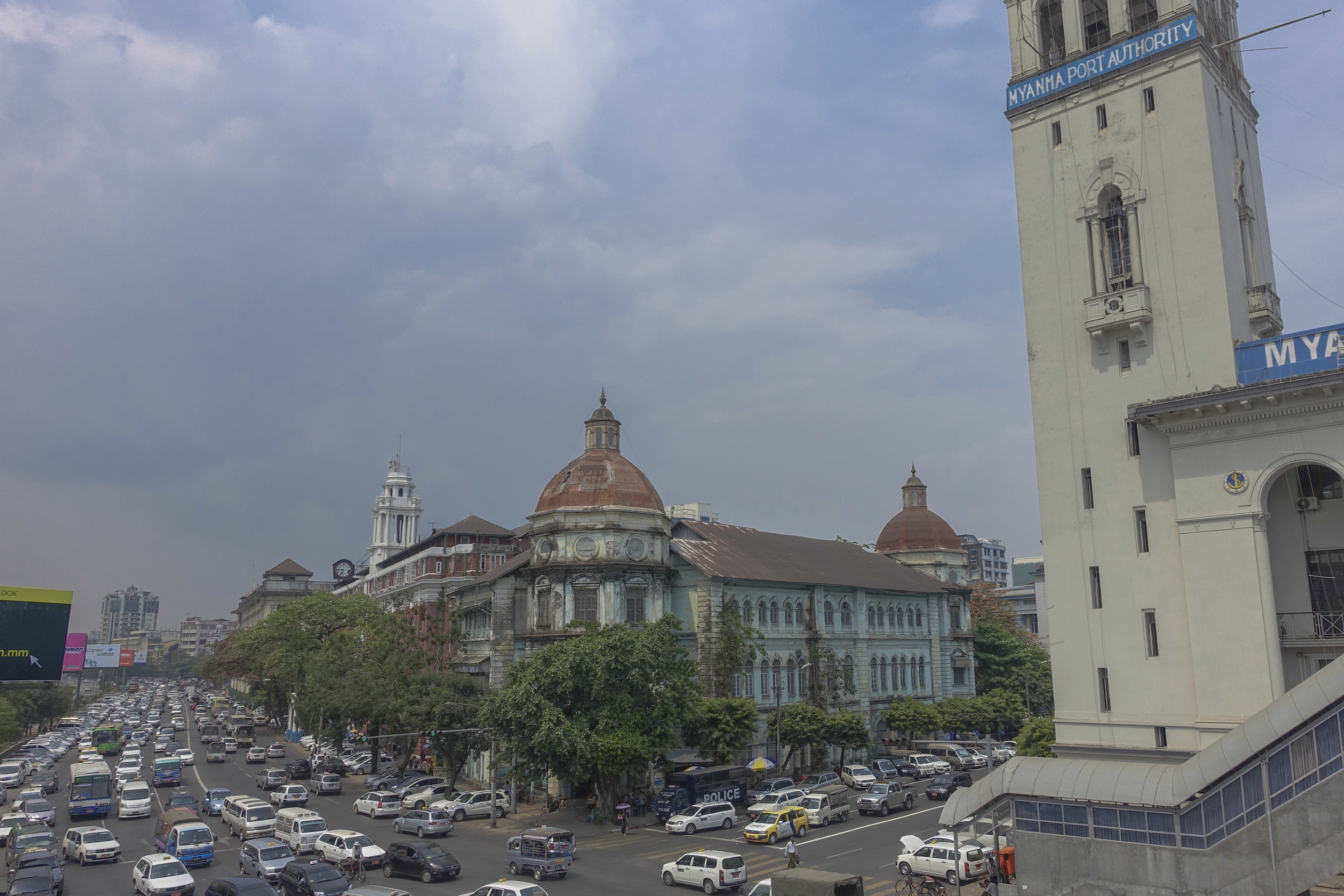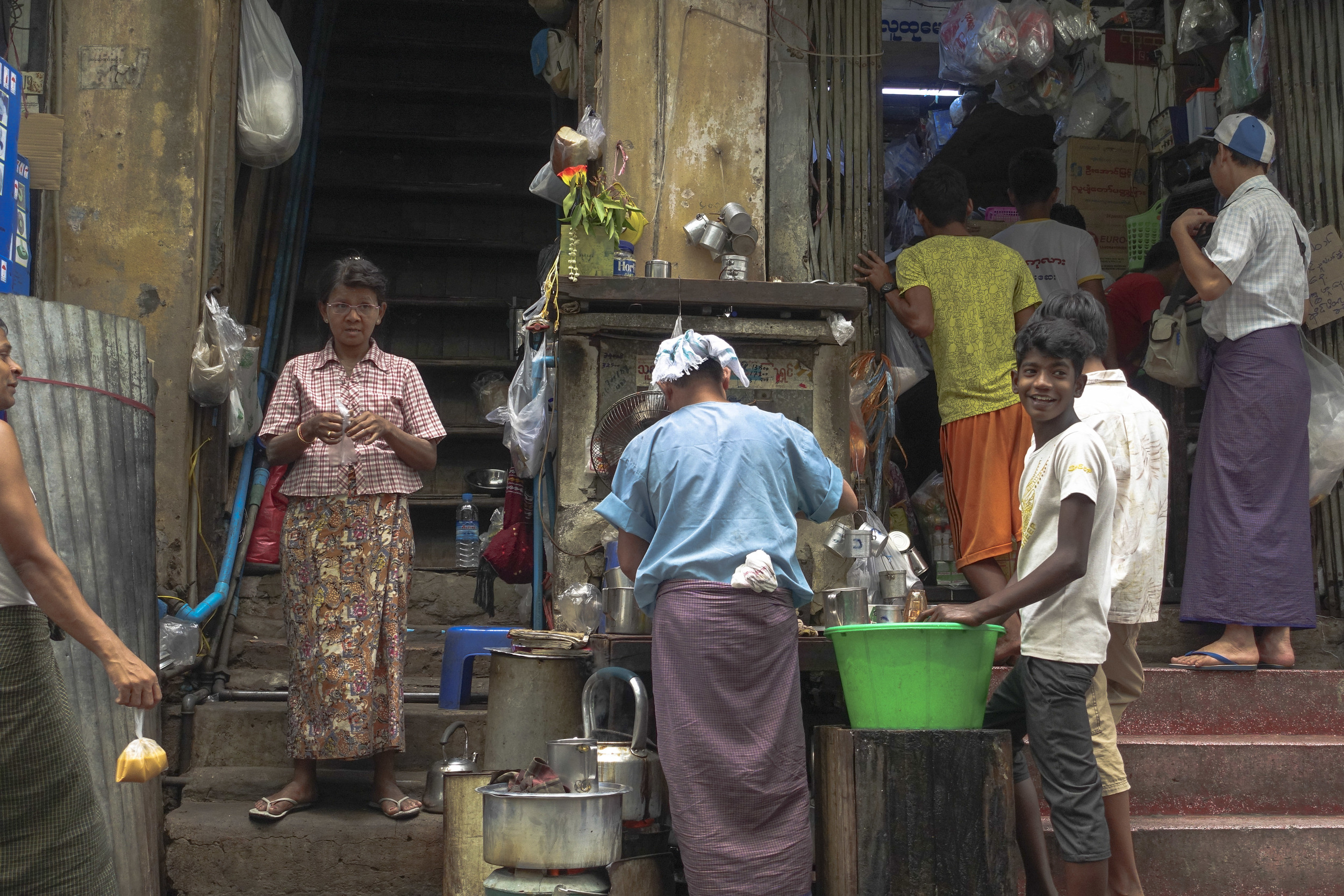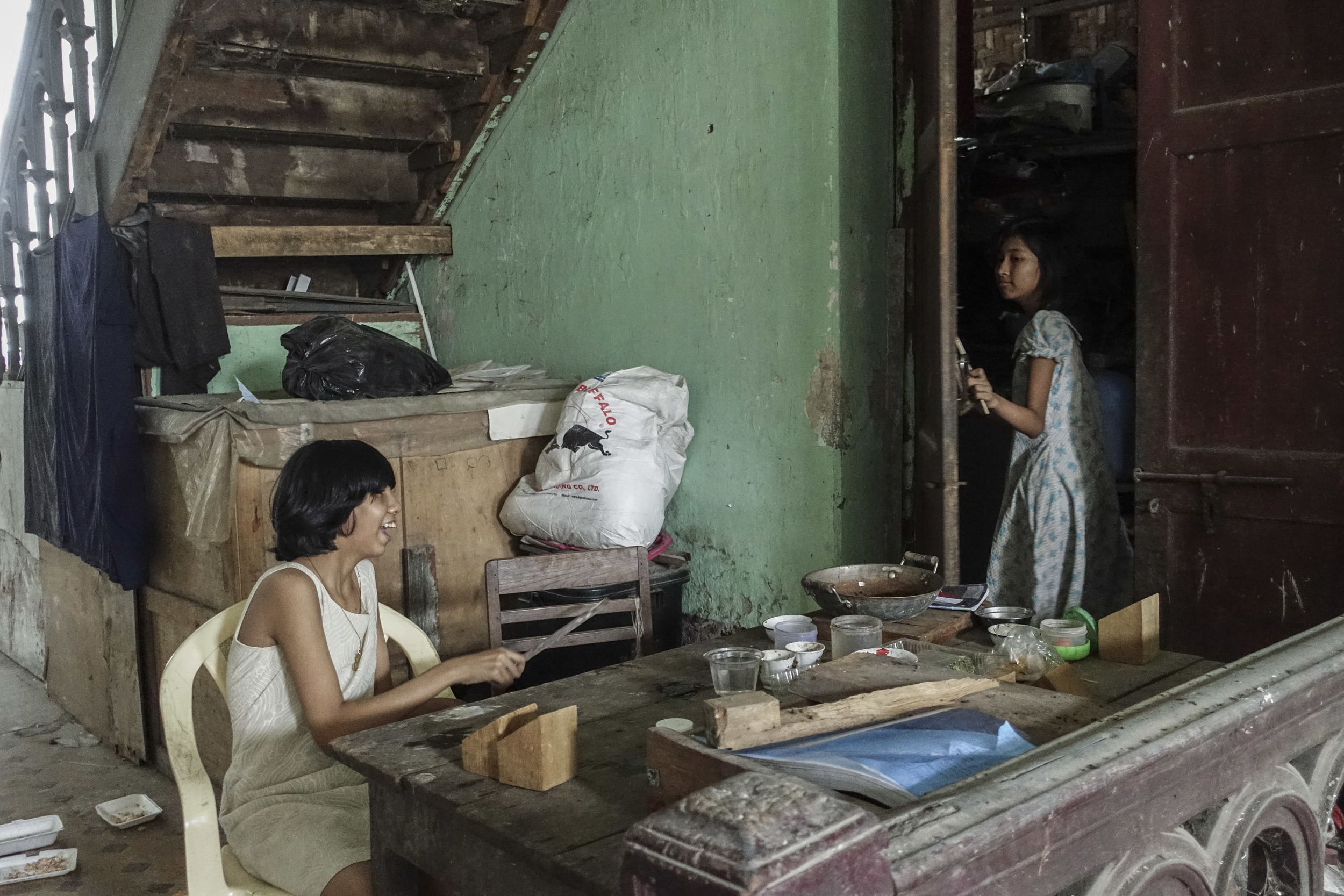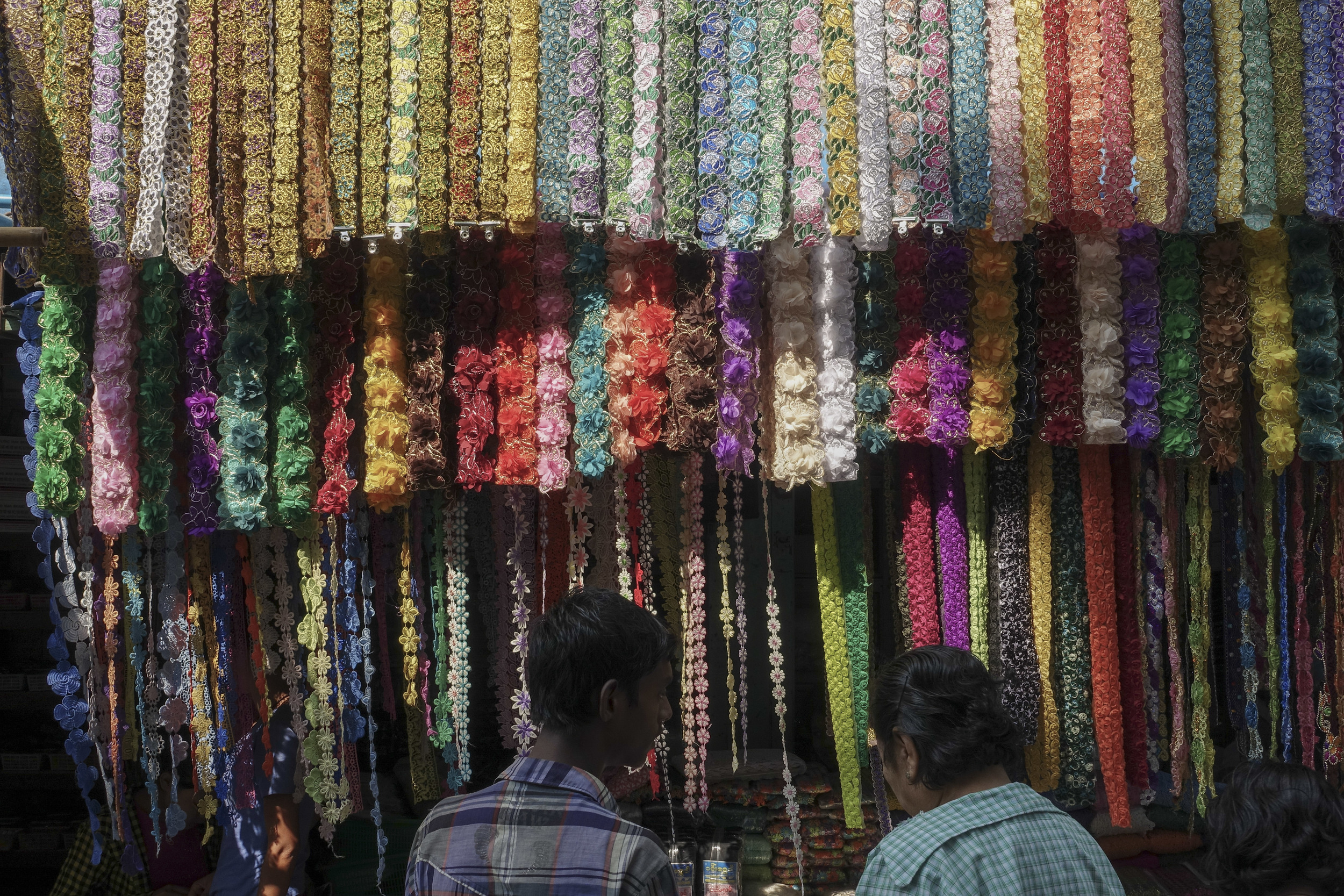When Yangon Spoke To Me
13 March 2016
THE CHOKE
The first gulp of Yangon isn’t clean.
The air chokes a little, not so much with pollution (motorbikes are banned here), but with dust and the voices of 5.5 million people crammed into a buzzing centre. Most people bus in and out from outlying suburbs and, as a result, the narrow streets are always full of people coming and going, toting bales of clothes, hawking an incredible array of fresh fruit and food and a veritable catalogue of used things for sale. Entire streets are devoted to screws, nuts and bolts while others have trays of beads, buttons and books all shouting for space.
Through it all, I find the possibility for a thousand stories. Whether it is dawn at Shwedagon Pagoda or riding the circular train, each scene calls to me to stay a while, watch and listen.
SHWEDAGON PAGODA
The most famous pagoda in Myanmar, Shwedagon Pagoda is purportedly 2,600 years old. An air of palpable reverence is present, especially at dawn, when mostly locals visit, a first stop to devote the day to a higher being before heading off to work.
Young monks move around the central pagoda structure, singing hymns and collecting alms.
LITTLE IRONIES
These photos reflect the ironies that exist in every city; juxtapositions of circumstance, some almost deliberate in their serendipity and others, captured in the generous opportunity of a moment’s glance.
Just letting it all hang out at Maha Bandula Park.
A 'donation' wall for blessings sits at the back of a plastic goods warehouse.
PORTRAITS
These are strangers captured in their element as the camera seeks to be as unobtrusive as possible, recording in silence.
THE WRECKAGE OF THE BALTHAZAR
The Balthazar Building was built in 1905 by B.C.H. Balthazar, an Armenian merchant, who ran a trading company called Messrs. Balthazar & Son. Located on Bank Street, which today is full of banks occupying old colonial buildings, Balthazar has fallen into disrepair; its exterior full of photocopying shops and tea stalls while its interior runs amok with law offices, something that hasn’t changed since 1927 when the New Law Courts opened directly across the street.
A semi-permanent photocopying shop on the outside of the building.
I guess it's a 'commercial-residential' building, because this woman was hanging up her washing on an upper floor.
STREET SCENES
On any given day, Yangon paints a picture of vibrancy, sometimes feeling more like an Indian city, New Delhi, for instance, as opposed to Vientiane or Ho Chi Minh City. This blend of colonial influence, wholesale trade and religion makes for a heady, if somewhat chaotic, mix.
A SLOW CIRCLE
Yangon is growing, again. The new masters are capitalists, and after the country opened up in 2011, investment has flooded in, causing congestion in all sorts of ways. But take a ride on the old circular railway that winds through older and upcoming neighbourhoods around the centre to see that much of Yangon is still in a process of negotiation. Foreign brands exist alongside family-run businesses, and everywhere the longhi predominates both as national dress and a way of life. Myanmar may be changing, but at least she wears her heart on her sleeve.
And perhaps the last word must go to George Orwell, who so beautifully observed in his novel Burmese Days, “It is a corrupting thing to live one‘s real life in secret. One should live with the stream of life, not against it.”
Taking the circular train around Yangon is an essential experience












